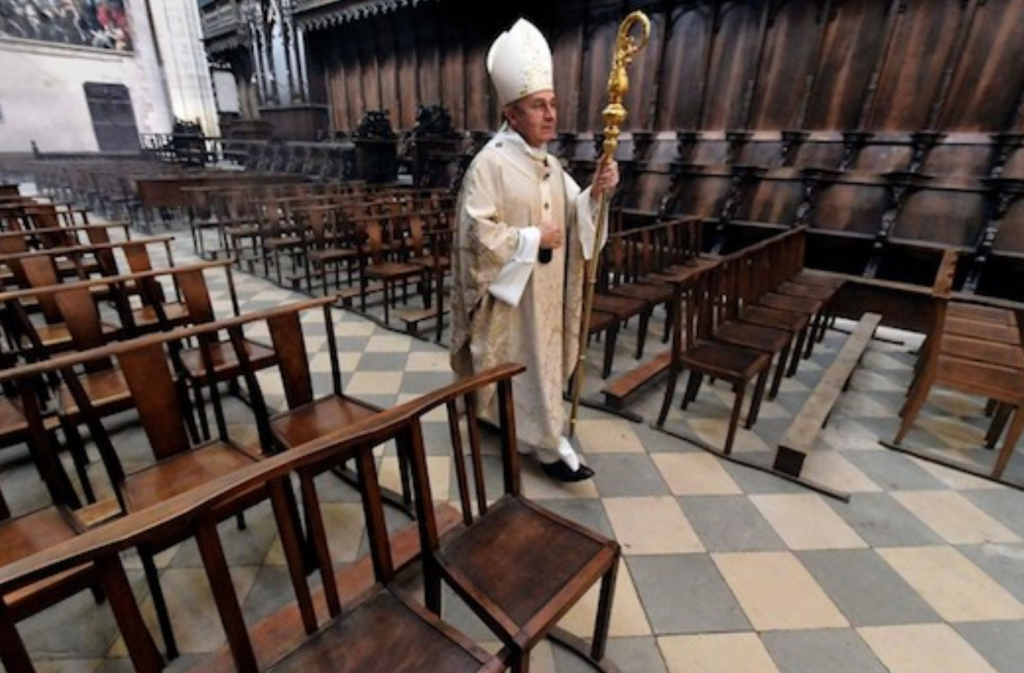Spiritual Communion III
Way back in the 1990s when John Paul II issued his order not to discuss women’s ordination, very soon the debate shifted to whether it was infallible. While subsequent popes seem to be treating it as if it is, plenty of theologians demonstrated that it isn’t.
I use this to introduce what’s happening this week to spiritual communion. The debate shifts to what the REAL PRESENCE is. Those bigger questions NCR asked for get addressed theologically by American Jesuit Felix Just. After distinguishing many examples of non-physical presence, he writes:
Moreover, Catholics believe in the “real presence” of Christ in the Eucharist, even though Christ is not “physically present” in the consecrated bread and wine in the same way that he was physically and historically present in his human flesh and blood while he lived on earth 2000 years ago.
A scientist would still say the consecrated species are “physically” still bread and wine, not human flesh and blood, even if Catholic belief says they are “really” Christ’s body and blood.
The Church developed a complex theology of “transubstantiation” to explain how something that outwardly/physically still appears to be ordinary bread and wine is now “really” something quite different.
Yet the “real presence” of Christ is a “sacramental reality,” which should not be confused with or reduced to a “physical reality.” Christ is not “physically” present in the consecrated bread and wine in the same way that he was “physically” and “historically” present to his first disciples.
Is this messing with our minds or opening them to new realities? After years of trying to explain transubstantiation to my Jewish husband, I’m open. And that dear departed husband still has a real presence in my life, by the way.
Just’s second article disappointed me; it’s mainly a long list of good suggestions for making streamed liturgies more communal, like the other male commentators I identified last week. He breaks practical, not theological ground except to conclude, “we should not rigidly insist on requirements of ‘physical presence’ when ‘virtual reality’ makes it possible to be ‘really present,’ although in a different way than we have been used to before now.”

Europe is in revolutionary ferment about all this; the Italian bishops protest continued bans on religious gatherings; “A group of French intellectuals, jurists and historians” cry “liberte” and ask for an end to a similar extension in the name of “religious freedom”; and French bishops consider masses in homes or with smaller gatherings in churches.
Well, not exactly revolutionary. In contrast to all this, NCR’s coverage has been pastoral: bishops, priests, religious, people, even government officials responding with concern as even a quick perusal of the Coronavirus Tracker reveals.
I’m not going to pivot this week to intentional Eucharistic communities, which I consider part of my beat for The Table, and not the Vatican, either, another part of it. Rather, I’ll highlight a Commonweal article by New York writer B.D. McClay. She ties together Rikers Island prison, St. Roch with the little dog, plagues and prisons, St. Catherine of Siena, tactility, contagion, and love. Sometimes I just want to think about the call to caring that we all must honor in the midst of the pandemic; we cannot ignore the ways we can help and heal each other, now and forever, Amen.

2 Responses
Masses in homes may be the future. But we need many more priests, including women priests.
This is a beautiful image by Mary Southard CSJ:
http://pelicanweb.org/20.05.Page24.Image4.jpg
Indeed a lovely image